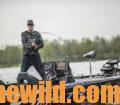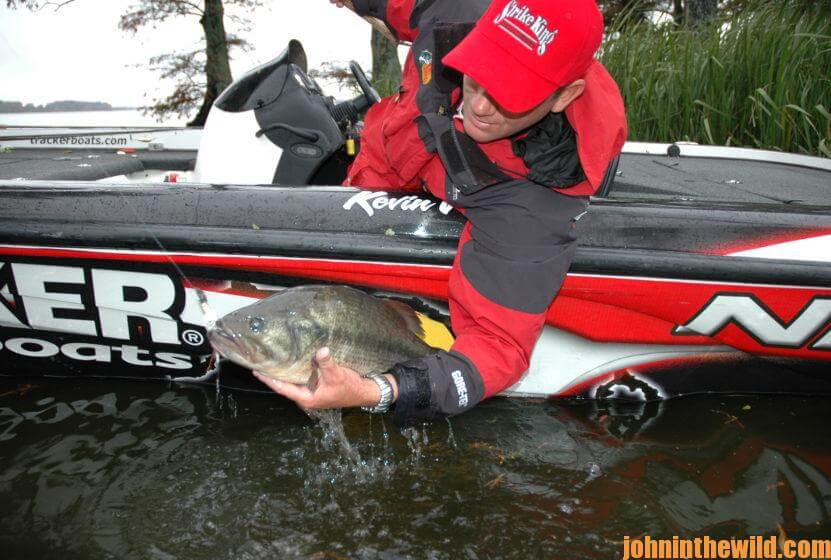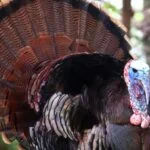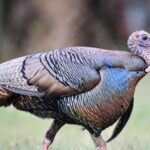Editor’s Note: Seven Bassmaster Angler-of-the-Year titles, four of those consecutively, and four Bassmaster Classic Championships make Kevin VanDam of Kalamazoo, Michigan, one of the most-consistent bass anglers on the professional-bass-fishing circuit today. Here’s what VanDam says about his secrets to consistency.
I have three favorite search baits that I use. Each of those baits is designed to search a different depth of water for bass. For instance, I’ll use the Strike King KVD 1.5 and 2.5 (https://www.strikeking.com/) to locate bass in 1 to 2 feet of water and the Strike King Series 6XD to find bass in water depths of 30 feet. These lures allow me to search different depths of water to determine at which depth of water the bass are holding. And, I don’t overlook the spinner bait. I 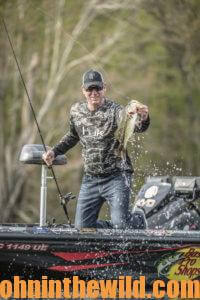 can fish the Burner spinner bait right on the surface, and the Bottom Dweller spinner bait I can fish as deep as I want. I can fish all these spinner baits fast. I also use Strike King’s Rodent and the Coffee Tube. I can flip those two at targets and hop them one time off the bottom. Remember that in practice I’m just looking for bass, not trying to catch every bass in the area or pick-apart the cover. I just want to know where the bass are holding, the water depth at which the bass are holding, the type of structure where they’re holding, and the area of the lake that’s holding the most bass. I always can come back on a tournament day to pick-apart the cover and fish every piece of cover in that region.
can fish the Burner spinner bait right on the surface, and the Bottom Dweller spinner bait I can fish as deep as I want. I can fish all these spinner baits fast. I also use Strike King’s Rodent and the Coffee Tube. I can flip those two at targets and hop them one time off the bottom. Remember that in practice I’m just looking for bass, not trying to catch every bass in the area or pick-apart the cover. I just want to know where the bass are holding, the water depth at which the bass are holding, the type of structure where they’re holding, and the area of the lake that’s holding the most bass. I always can come back on a tournament day to pick-apart the cover and fish every piece of cover in that region.
I’ve never seen a ledge I haven’t loved to fish for bass. I’m known as a ledge fisherman and have won a number of tournaments and caught a lot of bass off ledges. To pinpoint the ledges on the lakes I fish, I don’t get on the Internet and search for information. I look at a lake map to try to determine where the bass should be at the time of year when I’m fishing, under the weather and the water conditions I’m fishing. Then, I study a topo map of the lake to see the ledges and the drop-offs that show-up on the map.
I’ll go one step further and graph the area, once I reach the lake. I use a Humminbird side-imaging unit (https://www.humminbird.com/learn/imaging/side-imaging), which is an unbelievable tool for fishing ledges. This unit gives me a detailed picture of not only what’s underneath the boat, like most depth finders, but also what’s off to the side of the boat. With a Humminbird side-imaging depth finder, I can look at about 200 feet of bottom at once, whereas with the old depth finders, I only could look at about 10 feet of bottom.
Also, to locate the ledges, I spend a lot of time with crankbaits trying to cover the ledges and search for those little ledges that most people may not find. The obvious places, like points, main river drop-offs, creek-channel junctions and easy-to-find ledges probably have been found by every bass fisherman who fishes that lake and are fished really hard. So, I search for drop-offs and ledges that probably aren’t on any lake maps. I’m looking for the very-subtle drop-offs, like a 1- or a 2-foot drop-off. I still won’t find those hidden bottom breaks, unless I spend a lot of time cranking a crankbait. I can fish those s hallow ledges that only may be 1-foot deep with the KVD 1.5 or 2.5 and those deep ledges more than 20-feet deep with a Series 6XD. The Series 6XD dives deeper than most any-other crankbait, so I can find and fish the ledges other anglers aren’t able to fish with other crankbaits. These crankbaits give me a better picture of the bottom and enable me to feel the type of structure on the bottom.
hallow ledges that only may be 1-foot deep with the KVD 1.5 or 2.5 and those deep ledges more than 20-feet deep with a Series 6XD. The Series 6XD dives deeper than most any-other crankbait, so I can find and fish the ledges other anglers aren’t able to fish with other crankbaits. These crankbaits give me a better picture of the bottom and enable me to feel the type of structure on the bottom.
When I’m fishing a ledge, I try to let the bass tell me where they’re holding on that ledge on that day. Where the bass are holding on a break on any given day depends on the amount of current coming to the lake from hydroelectric-power generation. In a fast current, the bass typically will pull-up on top of the ledge and to the most-shallow part of the ledge. On a slow current, the bass may be holding right on the break of the drop-off. With no current, the bass may be suspended off the edge of the break. I experiment with various crankbaits, running them at different depths to try to get a bite. When I get a bite, I’ll know how the bass are positioned on that bottom break. Once I know where the bass are holding, I can position my boat to fish that water depth and select the crankbait designed to run at that water depth.
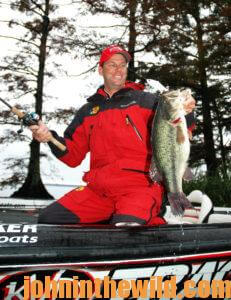 I’ve learned that bass will change their holding positions often during the day. To consistently find and catch big bass on lakes with hydroelectric-power generation, I’ll call the power company on those lakes to learn the power-generation schedule and know when they’ll start pulling water and running current. Then, when the time comes close when the current’s supposed to be running, I watch the sticks and the limbs that are sticking-out of the water to learn if I can see the current moving. This tells me how I need to position my boat to fish for the bass on the ledges.
I’ve learned that bass will change their holding positions often during the day. To consistently find and catch big bass on lakes with hydroelectric-power generation, I’ll call the power company on those lakes to learn the power-generation schedule and know when they’ll start pulling water and running current. Then, when the time comes close when the current’s supposed to be running, I watch the sticks and the limbs that are sticking-out of the water to learn if I can see the current moving. This tells me how I need to position my boat to fish for the bass on the ledges.
Most bass fishermen will cast onto a shallow flat, bring their crankbaits over the lips of the breaks and then back to their boats. Or, they try to parallel that bottom break, so their lures are running right on the edges of the breaks. I’ll sometimes put my boat on the shallow side of the drop-off, cast-out to the deep side and bring my crankbait from the deep water over the lip of the break and up to the shallow side of the break. I use this tactic when I’m fishing a bottom break I know is holding bass. I’ve learned that when I can show the bass my crankbaits coming from a different angle than they’re accustomed to seeing, I can trigger a strike that I never will have gotten if I’ve continued to fish from the same direction from which I’ve fished earlier. Also, when I know the bass are inactive, I may change from a crankbait, cast a Football Jig out into the deep water and drag it from the deep water, up the ledge, over the top of the ledge and into the shallow water. Many times that action will elicit strikes that I may not have gotten with a crankbait. When you pinpoint a ledge where you know the bass are holding, oftentimes you’ll have to vary the position of your boat, not just your lures and the types of retrieve you’re using. To catch bass on a ledge, you may have to bring your bait from several-different directions to find out which way the bass want to take the bait. That’s one of my keys to consistency.
To learn more about Kevin VanDam and his fishing, go to www.kevinvandam.com.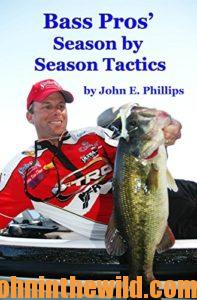
To learn more about catching bass, check out John E. Phillips’ book, “Bass Pros’: Season by Season Tactics at https://amzn.to/2IKUhe available in Kindle and print versions and Click here for the Audible link.
Tomorrow: Position Your Boat Correctly and Fish a Finesse Worm for Successful Bass Fishing with Kevin VanDam


